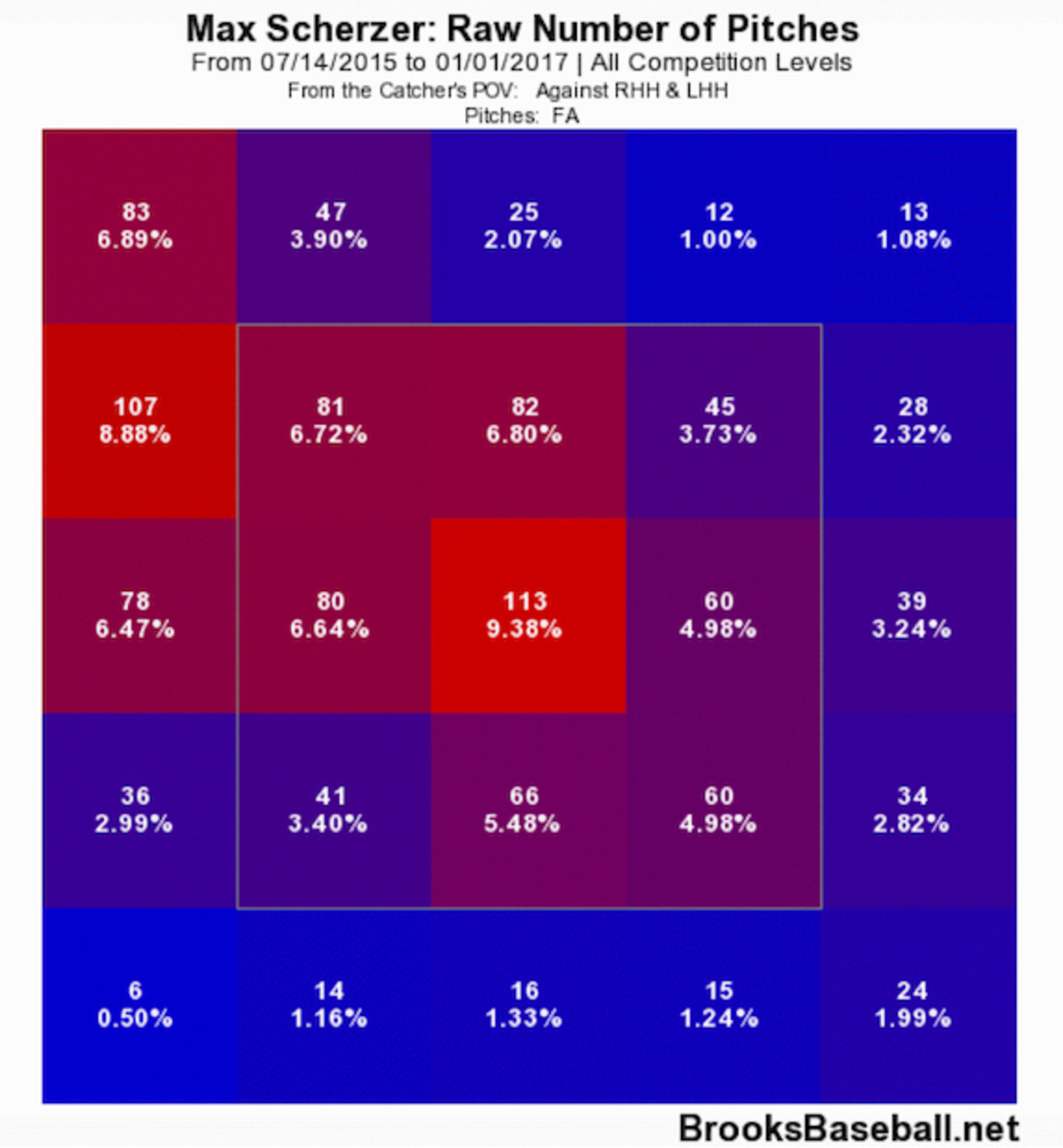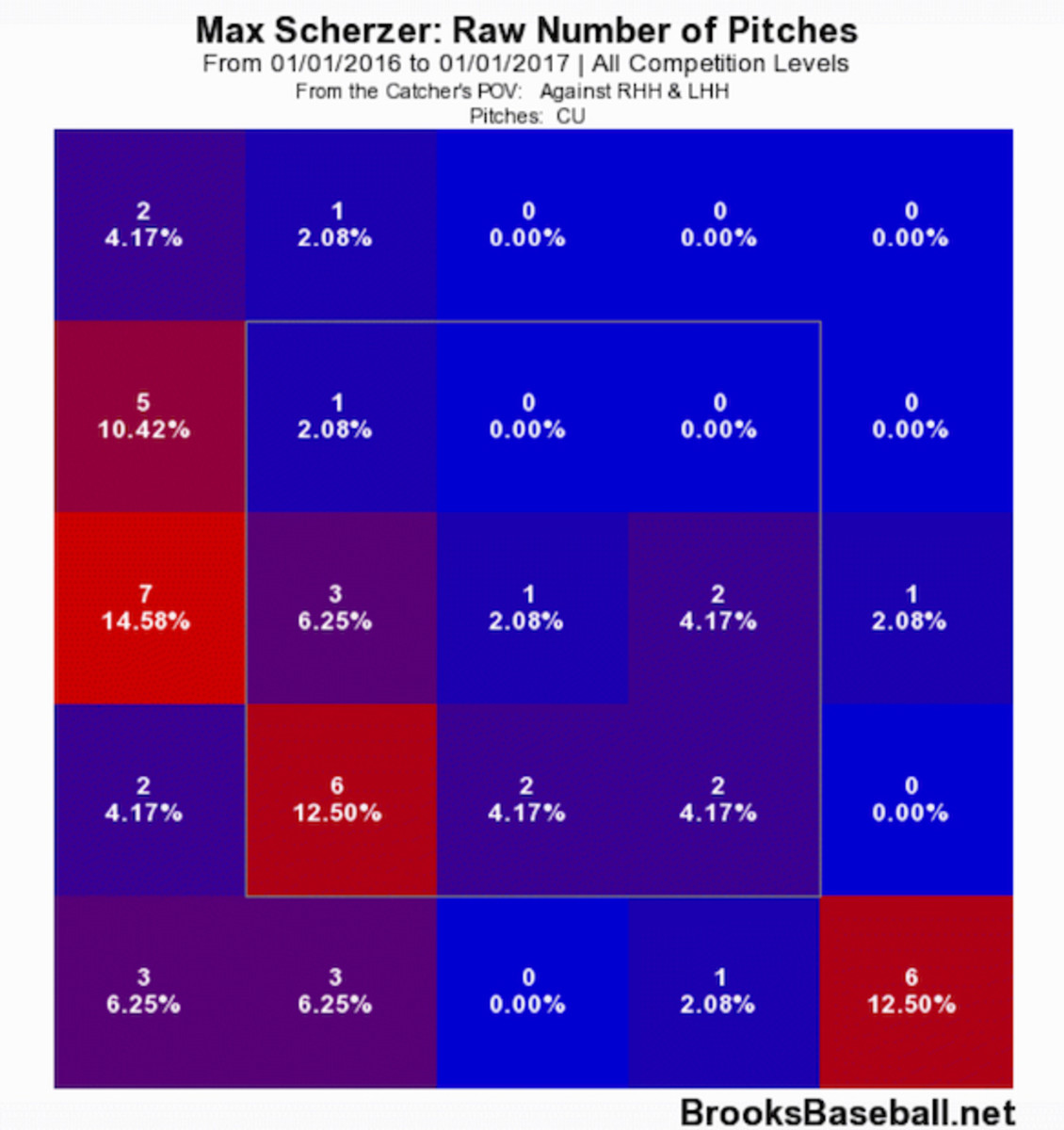Nationals’ Max Scherzer is struggling, but his problems are fixable

Successful pitchers come in all shapes and sizes. You could be pushing 7 feet tall like Randy Johnson, or insist that height doesn’t measure heart while standing 5’8”, like Marcus Stroman. You could be a workout freak like Jake Arrieta or…not, like David Wells. Your pitches could sit in the high-90s like Noah Syndergaard or dominate in the high-80s and low-90s with impeccable control like Greg Maddux. The wide-ranging spectrum of successful pitchers is one of baseball’s traits that makes it beautiful.
There may not be a cookie cutter for the pitcher position, but there is one thing that every successful pitcher—from Johnson to Stroman, Arrieta to Wells, Maddux to Syndergaard—has, and that is fastball command. It may not be a guarantor of success, but no pitcher has ever done well without command of his fastball. That is a lesson Max Scherzer is learning for the first time in his career.
Hitting report: Colby Rasmus’s strong start is no fluke
Scherzer isn't pitching anything like the Cy Young contender he has been for the previous three seasons. In five starts covering 31 innings this year, he has surrendered 15 runs on 29 hits and 12 non-intentional walks. Five of those 29 hits left the yard, putting him on pace to allow more than the 27 homers he did last season. He is still striking out just shy of a batter per inning, but his strikeout rate sits at 23.1%, far below his standards. The last time his K-rate was that low for a full season was 2011, when he finished at 20.9%. Scherzer’s strikeout rate in the four intervening seasons was a robust 29.2%, second in the majors during that timeframe behind only Yu Darvish, who missed all of last season.
The abundance of home runs and lack of strikeouts are different, but related, issues. We’ll begin here with the former, if only because it’s easier to both explain and correct. Scherzer has never had a serious problem with the longball, especially the Scherzer we’ve come to know and love over the last four years. During that time, he allowed 0.91 homers per nine innings, which isn’t sterling, but it also isn’t a death sentence. Chris Sale and Stephen Strasburg were both at 0.89 HR/9 from 2012 through 2015, and they, like Scherzer, also spent those four seasons cementing their status in the top two tiers of starting pitchers.
Everything started to take a turn for Scherzer last July. Before the All-Star break, Scherzer allowed 10 homers in 132 innings. After it, he allowed 17 in just 96 2/3 frames. Add that to the five he has allowed this season, and Scherzer has surrendered 22 bombs in a little less than 60% of what typically constitutes a full season for him (about 215 innings). In that time, a whopping 18 of the 22 homers Scherzer has allowed—almost 82%—have come on his fastball. For his career, 68.5% of the 165 homers off Scherer came against his fastball. Through July 13, 2015, hitters had a .246 batting average, .414 slugging percentage, and .168 isolated slugging percentage against Scherzer’s fastball. Since then, they’re hitting .269 with a .522 slugging percentage and .254 ISO.
Clearly, something has changed, but it’s not a velocity issue. Scherzer’s average fastball this season checks in at 94.8 mph. Instead, it almost certainly boils down to command.
The following graphics are zone profiles specifically for Scherzer’s fastball. The first begins in his 2008 rookie season and goes through the first half of last year. The second picks up after last year’s All-Star break and runs through the present day.


The first one shows a pitcher with complete command over his fastball. He’s busting righties in on the hands with the pitch. When it is in the zone, it’s most often at the knees, and when he goes up, he does so with a purpose. That is textbook fastball command in chart form.
And then comes the downturn. That bright red square right in the middle of the more recent zone profile is as bad as it looks. It doesn’t matter how hard you throw when you throw it there. Opposing hitters have racked up a .419 ISO on those 113 center-cut fastballs because of course they have. Any pitcher is going to get lit up on his fastballs that are belt high and right down the middle of the plate. The issue is that Scherzer has thrown way too many of those since last July.
The good news is that command is a whole lot easier to fix than velocity, especially for a pitcher as good as Scherzer. He recently said that he believes the issue is that he’s dropping his shoulder, which lessens, or entirely eliminates, the natural left to right movement (from Scherzer’s perspective) of his fastball. We can see what Scherzer is getting at with the following screenshots and GIFs.
The first screenshot is from Scherzer’s no-hitter (and near perfect game) against the Pirates last June. The second is from Tuesday’s start against the Phillies. Scherzer throws at three-quarters, so his arm is always going to be flatter than most, but you can see that his elbow is slightly above his shoulder in the screenshot from last June, whereas you can draw a straight line from his shoulder to his elbow in the one from Tuesday.


That gives us an idea of where Scherzer is going wrong mechanically. The GIFs show us how that, in turn, leads to suboptimal results. When Scherzer’s fastball is right, it has the tailing action of a two-seamer, even though it’s a traditional four-seamer. We see that in his showdown with Starling Marte from last June.
The pitch starts off the outside corner, but comes back into the strike zone after Marte has given up on it. It’s a nearly impossible pitch to handle when it is commanded well, and is the basis of Scherzer’s success.
Even the pitch that Scherzer missed with to start the at-bat shows why his fastball, and command of it, is so crucial. Imagine being a righty and trying to do something with this pitch, especially if you’re down in the count.
Fast forward to Tuesday. A flat arm leads to a flat pitch that is wholly devoid of movement. It’s no surprise what happens next, even when it’s a hitter like Andres Blanco at the plate (no offense, Andres).
If I’m a Scherzer owner, this gives me a lot of confidence. Not only does this seem to be a simple fix for him, it’s one he has already identified. Remember, though, that at the beginning of the column we said Scherzer has two problems that are different, yet related. The other is a strikeout rate that has dipped sharply this season.
To refresh your memory, Scherzer’s strikeout rate this season sits at 23.1%, which is fine for plenty of pitchers, but way off the mark he set for himself the last four seasons. Scherzer racked up at least 10.08 K/9 in each of those seasons. This year, he’s down at 8.71.
Pitching report: Padres’ Pomeranz reveling in second chance
Part of this owes to, you guessed it, fastball command. Scherzer’s fastball this year has a 10.9% whiff rate that is right in line with his career number of 10.4%. With a fastball like Scherzer’s, one that can freeze righties away and lefties in, you’d expect to see a high number of taken strikes. Hitters have taken just shy of 12% of Scherzer’s career fastballs for strikes. This season, however, that number is down at 8.2%. That speaks to how many of them are catching too much of the plate. When he throws the pitch for a strike, it’s too hittable, and that is limiting the number of called strikes he gets with the pitch.
Additionally, Scherzer is getting fewer whiffs with his changeup and curveball. Scherzer’s curve isn’t a huge part of his repertoire, though he has thrown it about 8% of the time since 2013. His changeup has always been an important pitch, and while he phased it out a bit last year, he’s still throwing it 13.6% of the time this season. The pitch’s whiff rate is down at 11.3%, which would be a career worst if it held all season. As for the curveball, the next swing and miss he gets on it will be his first of the year.
Movement doesn’t appear to be an issue for either pitch. In fact, according to Brooks Baseball, Scherzer is getting more horizontal movement on his changeup than ever before. Once again, the issue is command.
Let’s start with the changeup. As a righty, Scherzer is going to use the change primarily against left-handed hitters. That means he wants the pitch to be clustered in the four boxes in the bottom left corner of his zone profile. The first one shows the first eight seasons of Scherzer’s career, while the second one is from this year.


We’ll save you the hassle of pulling out a calculator. Scherzer hit the ideal spot with 38.8% of his changeups from 2008 through 2015. This year, 35.2% of his changeups have been in that area. A changeup isn’t effective if it isn’t spotted well. You may still get the hitter out in front, but if it’s down the middle or on the inner third, they can still get a piece of it to stay alive. The pitch needs to be away to take full advantage of its tailing movement.
Given that Scherzer doesn’t rely on his curveball, it’s a true chase pitch. His curve can be effective without ever being in the strike zone. He doesn’t need to get called strikes with it. He needs it to be a weapon every so often in a two-strike count, and that means he typically wants to bury it in the dirt. He has done that quite effectively for most of his career.

As for this season…

Missing spots with his fastball. Missing spots with his changeup. Missing spots with his curve. Command is to blame for Scherzer’s slow start in 2016. Luckily for his owners, that can be the easiest thing for an elite pitcher to get right. It’s worth checking with his owner to see if he or she is getting nervous, though he or she shouldn’t be. Scherzer is going to be just fine.
